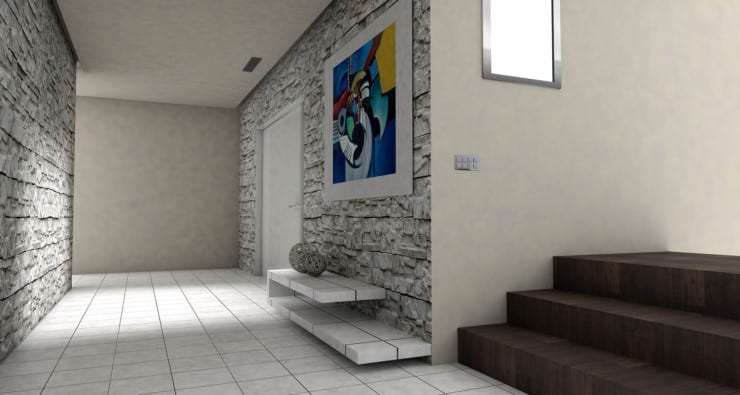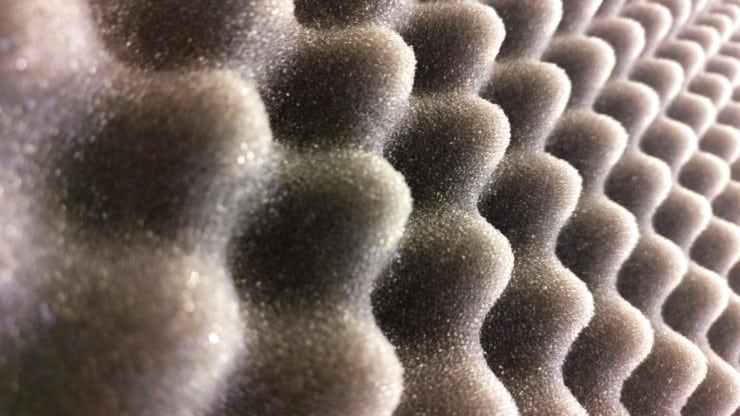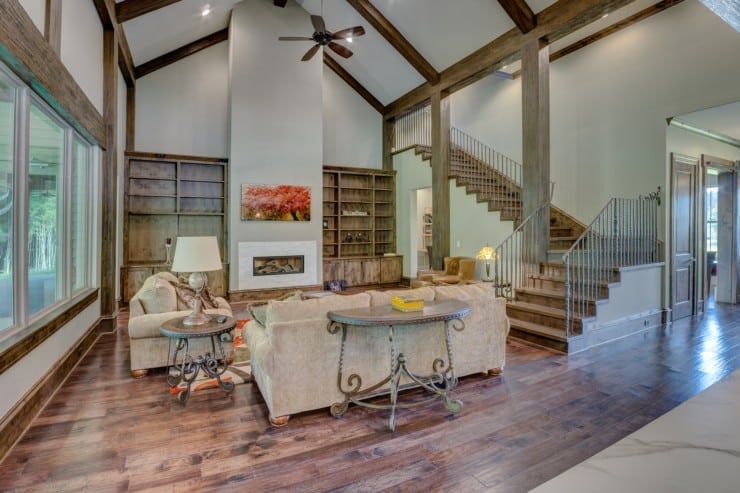How To Reduce Echo in a Hallway? (Simple Solutions)
If you have ever been in a spacious, deserted room, you may have observed the echoing sound.
The same happens when you have a hallway in your apartment or workplace. Echoes occur when the sound waves hit flat and large surfaces.
Trying to soften these surfaces is the best approach to reducing echo in the hallways.
How to reduce echo in a hallway?

The echoing hallways can be annoying. Be it in an office, club, or apartment; you must find a way to deal with the unwanted reverb.
Consider these fixes to solve the echo issue in the hallways:
Solution # 1 – Carpets, curtains, and rugs
Hardwood or concrete floors act as reflective surfaces. Using a carpet or rug creates a soft texture and adds warmth and decorative punch to the room.
A rug adds character to the room, provides soft underfoot, and works incredibly to absorb the sounds.
Installing curtains in your hallways is another way to create more soft surfaces. If you have a wide window in the hallway, draping or curtain over it is a good idea.
Blinds may not serve the same purpose as they are often made of hard material.
Soundproof curtains are also a good alternative. They are more expensive than the regular curtains but don’t overburden your pockets.
Solution # 2 – Smart furniture choices

Adding furniture in the hallway requires adequate thinking. Typically, there is no furniture in the hallway as it creates obstacles in the path.
However, strategic placement of shelves and consoles can help to reduce echo in the halls. Simultaneously, it also brings a classic touch to the space.
You can work on the following measures:
- Add soft furnishings like chairs or couches
- A fabric couch absorbs more sound than the leather couch
- Add cushions on chair or couches for surplus sound absorption
- Hang tapestries on the walls
Soft additions in the room will help with enhanced sound absorption. It also reduces the likelihood of echo in the hallways.
When doing so, you must make sure that you don’t mess up the aesthetic of these hallways. There should be enough space for wandering about and strolling in these halls.
Solution # 3 – Hang artwork
A large canvas painting or cloth hangings will create sound absorption surfaces to combat echo. Positioning soft items on the walls will disrupt the ability of the sound to bounce back.
Breaking up the large surface of the wall is an ideal strategy to interrupt the bouncing of the sound waves. It lessens the sound created through the echo.
The key is to choose a range of materials and textures within the artwork.
Consider buying some wooden carvings, a large canvas painting, or tapestries to hang on the walls. It will add personality to the halls and also reduce the echo.
Solution # 4 – Acoustic panels

The acoustic panel is specifically designed to combat echo in different rooms.
You can buy packs of acoustic panels online. The prices may vary from one portal to another.
We recommend that you cross-check the price tags on various forums and opt for the best one.
When surveying the acoustic panels, make sure that:
- The foam has an open structure
- The valley and peak, and pyramid foams have identical NRCs
- All shapes can scatter with its shape
- The panels are 2” thick
- Covers 20 to 30% of the room’s flat walls
You must focus on the reflection points of the hallways when you are working on their sound insulation. What is the first point of contact of the sound waves when it leaves their source?
Installing the acoustic tiles is a straightforward process. You have to spray some adhesive on the wall and paste the tiles there.
Ensure that you don’t use excess glue as it can block the pores of the tiles and reduce their effectiveness.
You can use these panels on the ceilings where they suspend vertically or horizontally. This is a standard solution for large halls where you have a speaker or a performance.
Panels are also available in the form of a suspended ceiling. This means that a good absorption level can be achieved within a standard-looking fit-out.
Solution # 5 – Bass traps
Bass traps are acoustic foam designed to absorb the bass frequencies.
Their design and acoustic properties are the same as the panels. The placement is different as the traps go into the corners of a room.
This happens because the low-frequency sound waves pressure the hall’s boundaries. Corners become the key reflection points for the bass frequencies.
This happens because the 90-degree angle is an ideal reflection point.
You can check the standard size of bass traps online. You can fit the web anywhere in the room, but you should do complete research before you opt for installation in any particular corner of the space.
What is an echo?

When sound is made, its waves travel through the air until they fall upon a surface. When these waves hit solid grounds, it bounces back.
The more the space between the sound source and the surface it bounces off, the enormous echo you can hear.
This is why you notice more prominent echoes in the hallways or standing on a mountain canyon.
In contrast, when there isn’t a lot of space, the sound comes back less noticeable because it mingles with the original sound source.
Thus, to reduce the space of sound waves traveling around the room, you should reduce the bouncing by being smart about the room layout.
FAQs
What can I use to stop my walls from creating echoes?
Walls are the most expansive area available for sound waves to bounce off. When reducing echo in a hallway or an ordinary room, you should position soft surfaces on the walls.
These will disrupt the ability of the sound to bounce back and forth between the adjacent walls.
A fabric art piece or curtains are ideal for creating a soft surface on the walls.
Why does my hallway have an echo?
High ceilings and hard floors are the major reason behind echo in the hallways. The sound waves have to travel a long distance to reach the surfaces, which creates a reverb around the halls.
Covering the floors with rugs often helps to reduce echo as carpets can absorb the sounds. They also add a décor touch to the halls, turning dull and monotonous corridors into a space you would love to stroll or hang around.
How can I reduce street noise in my home?
There are some methods that you can implement to cut the street and traffic noise in your house. For example, planting more trees in the front yard and ensuring that you keep all windows and doors closed.
Such measures can help you get relief from the street noises.
Final Thoughts
A flutter of echo can make a place disturbing, clinical, and cold. Treating your halls and rooms with clever acoustic choices like those listed above can enhance the overall atmosphere of the space.
You must find the best answers to your acoustic troubles. This requires evaluating the room or halls and choosing solutions according to your affordability.
Asking for professional assistance to analyze the room is always a helpful option.







